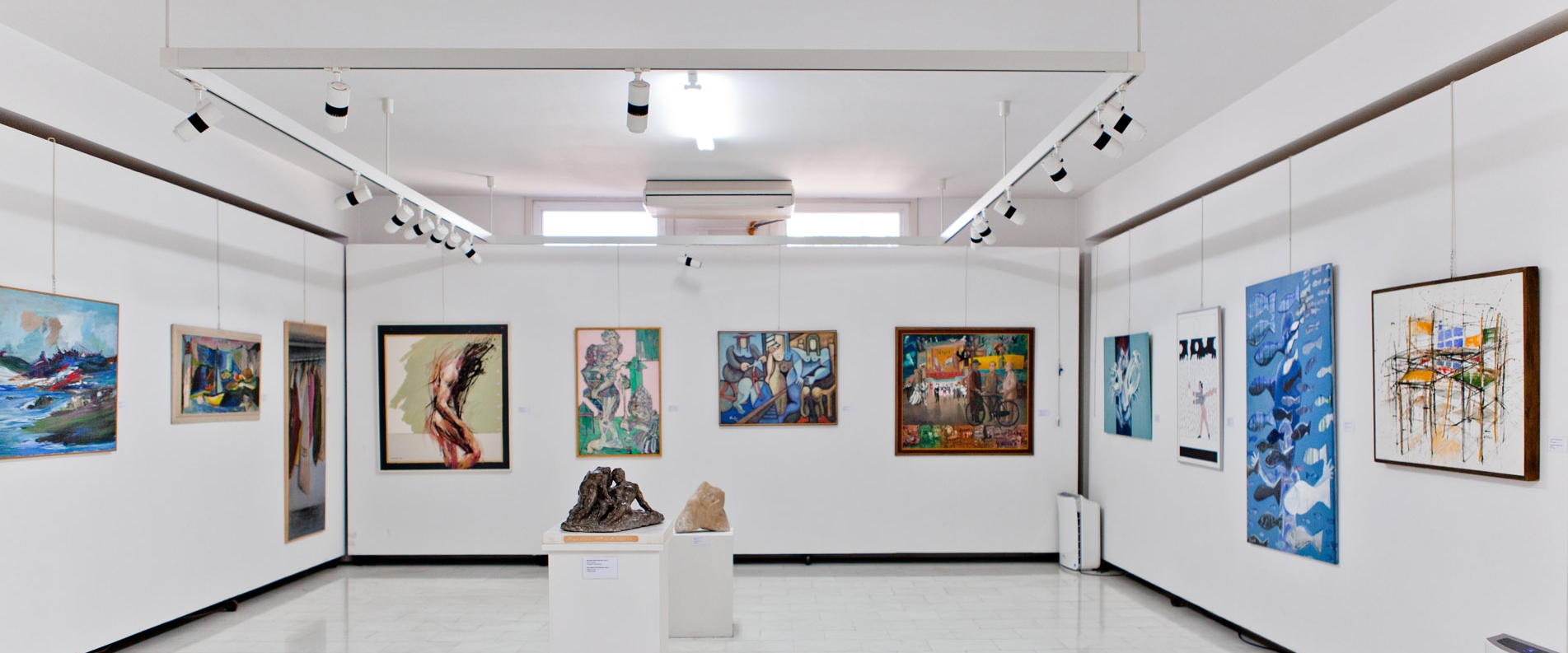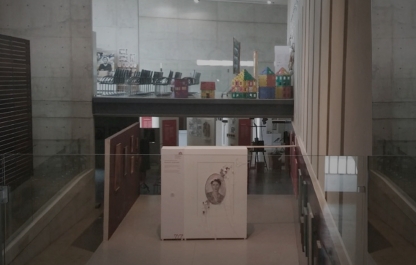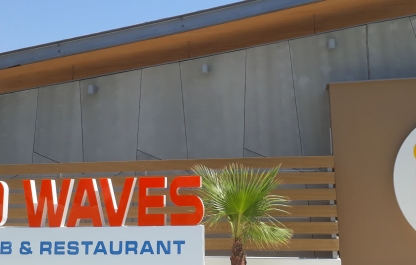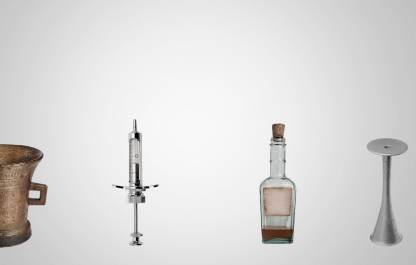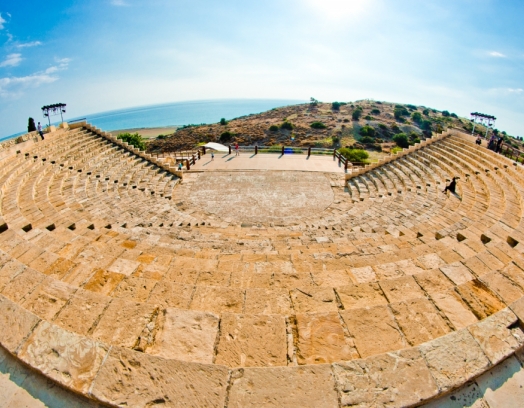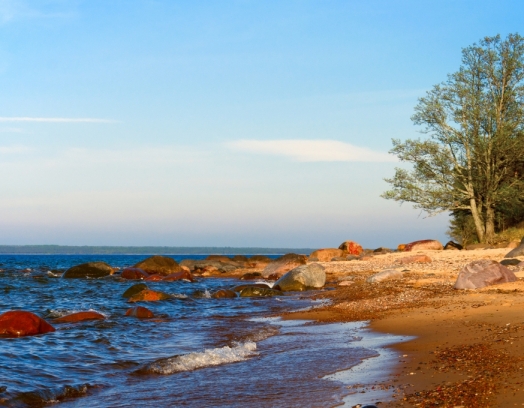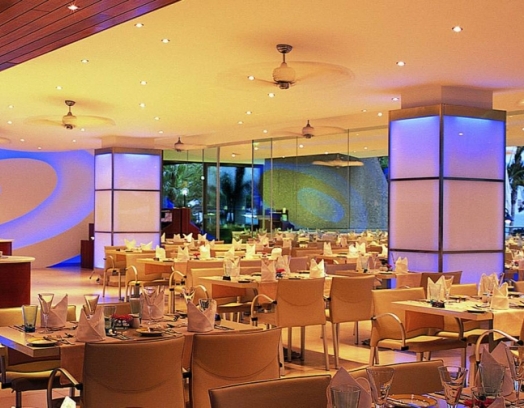Limassol picture gallery is one of the largest collections of Cypriot works from the most impressive representatives of classical and modern picture art. It also houses the works of several artisans from Greece and other foreign countries, who have contributed to the development of artistic culture in Cyprus.
The present collection has a total of 600 units in storage: paintings, graphic art, sculptures and installations, ceramic works and other pieces of applied arts.
Opened on the 26th June 1988, the gallery naturally has a story to tell, which we will share with you today.
So, until the mid-1980s, this was a private residence belonging to the family of Ipatia Zinonos-Pavlidis.
This is by no means a traditional Cypriot house: it stands out quite vividly thanks to its architecture — an atypical style for an urban build in a southern-coast city — which was inspired by European modernism and brought over from Germany (the “Bauhaus” movement). As a matter of fact, the mastermind of the project was the German architect, Benjamin Ginsburg, who in 1938 brought the plan into being. That same architect, incidentally, was the mastermind behind the famous Rialto Theatre in Limassol.
And so, on the 30th January 1984, ownership of the building was transferred to the future gallery. Eight years on, after the exhibition halls had opened their doors to the broader public, the municipality decided that extension and construction of an additional room were necessary (it opened on the 29th June 1996).
Today in the gallery halls, we can see the works of so-called “old school” artisans, as well as new names and pieces of art. As such, the collection illuminates and envelops both old naturalistic and realistic tendencies (characteristic of European art in the second half of the 19th century), as well as modern works, which shed light on creators’ views regarding art and its role in the life of contemporary society as a whole. The halls of the second floor have been devoted to the magnificent collection of Marios Vasiliadis; the lower, semi-underground level, houses an exhibit wholly devoted to the ideas and events of the Cypriot national-liberation struggle (mid-1950s-1960, the exhibit pieces all belong to the Council of historical remembrance).
As is stated on the official page of the Limassol municipality website, the gallery employees try to keep in touch with the latest trends and research carried out in Cyprus, linked to studying and acquiring the country’s artistic heritage. This may concern both the master artisans of past years, as well as the works of talented new artists. Upon creating the exhibition now on permanent display, special attention was devoted to artists and sculptors born in Limassol and its neighbouring areas. Specific focus was also placed on the creative works of outstanding figures in art who lived and perfected their technique here, beginning from 1974. Naturally, the creations of artisans from other regions on the island, are also on display in the collection.
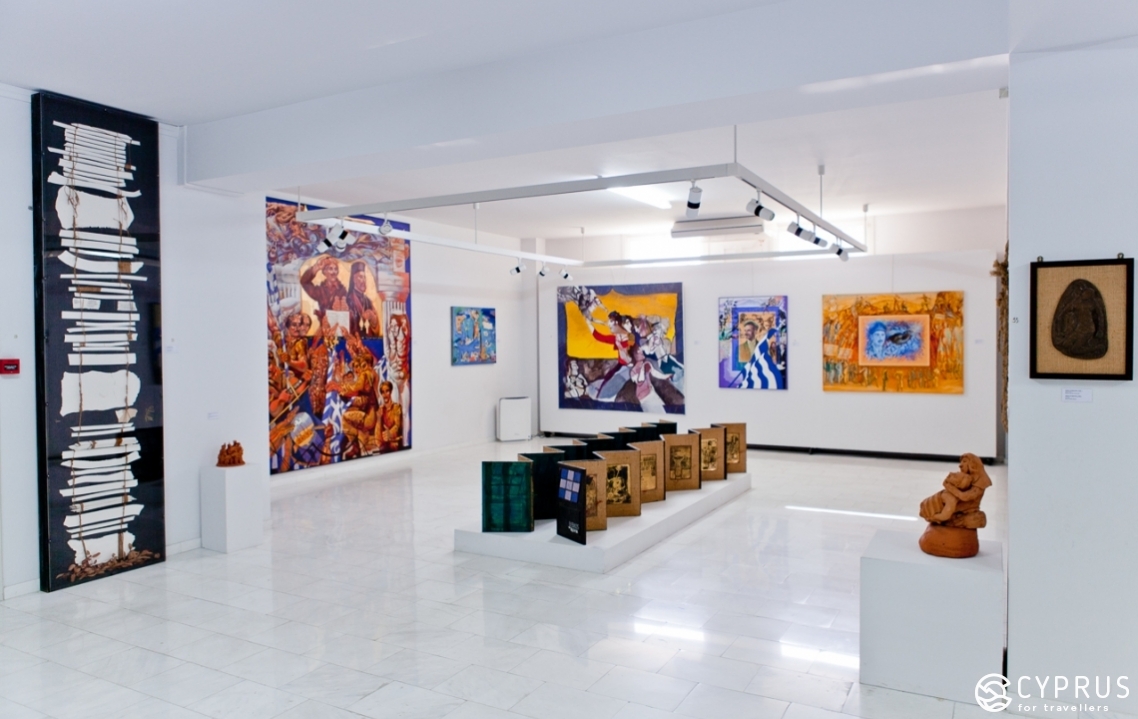
Amongst other things, the gallery plans to stage travelling exhibitions: the exchange of exhibits has always been of great significance, both from an artistic and cultural point of view; it enables further development of relations with other countries and people while making a feasible contribution to the development of the arts. On the other hand, focusing on the work of Cypriot artists provides the public with a chance to find out more about them and understand the traits of the art-culture life in Cyprus.
Aside from the island’s adult population and foreign guests, the Limassol gallery is often visited by pupils from the city’s schools, as well as students from the many universities in other cities. Even the little ones — nursery pupils — come to the gallery.
Some artisans, whose creative work is acknowledged by art historians as the most significant, has been displayed retrospectively in the picture gallery, no doubt allowing for full immersion into their creative minds. This will be especially interesting for guests to Cyprus who are potentially being introduced to the country’s art for the first time; in the gallery, there really is something to see, remember and be amazed by…
We’ve already discussed this once, for instance, during our cultural walks around the galleries and collections of Nicosia (for more information, please read our reviews: the CVAR Centre, the Zampelas Art Museum, the Archbishop Makarios Foundation Collection — the Western-European Art, Cypriot and Greek Art Gallery, the A.G. Laventis Art Gallery).
Old School
The exhibition begins immediately in the gallery entrance hall, surrounded by several small halls displaying works from representatives of so-called “Old School” Cyprus. These are painters, graphic artists and sculptors, whose works have been gathered together in this collection. They are all natives to Cyprus, who in their masterpieces have incorporated and redefined many modern trends common throughout Europe: cubism, impressionism, realism, expressionism etc. Here you can see textbook examples of works familiar to any Cypriot school pupil, for instance, “The Portrait of Archbishop Makarios S” (N. Antoniadis) and others.
Since the exhibits do not adhere to a strict chronology, we suggest you wander through the halls and obtain a general impression of the works by these master artisans from past years.
One of the first you’ll “encounter” is Takis Frangoudis (1901-1978) and his cubism paintings (“Island Scene”, “Art”); nearby is the sculpture of Fedon Putamitis — marble-carved torsos. The first hall also displays the curious patterns of the female artist Lukia Nicolaidou (1909-1993) (like in any traditional society, in the early stages, there were far fewer women in art than men), — predominantly images of female nudity, which had evidently been influenced by Pablo Picasso (most likely his early work, from the so-called “pink” period, with its characteristic fullness of life and the desire to transform reality).
In the main hall space (behind the administration point) we recommend directing your attention to the very talented work of Chrystophoros Savva (1924-1968) — an artist not only famous to the island but far beyond its limits. Many galleries and museums, in addition to private collections, have his works in their possession and rightly so, take pride in them. His pieces are also private guests at local and international art auctions. In the gallery, for instance, you can see: “The Broken Cross”. Next to it lies a creation of the maestro, Adamantios Diamantis (1900-1994), who was also a world-renowned poet, as well as the founder and first director of the Folklore Museum in Nicosia. The exhibition houses one particular piece, evidently from his early works: “Morning. The White House” — a liberal manner, characteristic of “new” artists, together with the use of a canvas technique — traditionally an “old school” style of painting.
Lefteris Ekonomou (1930-2007) and his impressionist views of Cypriot villages: “Lapithos” (1959, wax on canvas). For those familiar with Soviet art, the concise manner of Ekonomou will no doubt remind you of Martiros Saryan and his “synthesised reality” as it was branded by the Armenian artisan. The creative work of Telemachos Kanthos (1910-1993), another Cypriot painter and graphic artist, sings praises to the material world in Cyprus: you can see several scenes and images of this genre, depicting human figures in a pastoral surrounding. A couple of the graphic works have been crafted by xylography (woodcutting) “Girl by a Fountain” and “Girl under a Nut Tree”.
Please note: for some reason, the creation date of specific exhibits isn’t indicated in the legends provided (if you wish to discern this, you can only do so by looking at each individual artist’s signature). You also won’t find any biographies of the master painters, but this is believed to be temporary…
Continuing our inspection… we walk into the small hall to the left of the entrance, containing the works of Victor Ioannides (1903-1984) — portraits of contemporaries (“Portrait of a Peasant”, 1956), painted realistically. It also features a series of pieces dedicated to Cypriot life and its reality (“The Kykkos Monastery”). The artist most likely experimented with different styles, changing his painting manner; we can also see some post-impressionist, still life art, such as “Flowers in a Green Vase” (1962). Many of V. Ioannides’ works have been painted with a warm colour range, for instance “Buying and Selling Animals (at the Bazaar)” (1957) — a sample of local, as it’s conventionally named, “socio-realism”. The work is imbued with an air of positivity and even a little mischief. We can see the distinguished characters losing themselves in trading on a market, amidst the backdrop of a sunlit sky. The artist works with love and enthusiasm, sculpting the faces of southern locals and the mountainous landscape surrounding them, flooded by the bright rays of the sun.
The hall situated deep to the left, behind the administrator stand, is dedicated to graphic art.
It’s by no accident that I return so often to this particular spot: the Gallery employee is not only our first port of call — whom we go to for information and detailed explanations — but our main point of reference for speaking about the Museum.
The virtuoso works of V. Ioannides are also on display here: these mainly consist of paper drawings with Indian ink and a feather pen. They feature candid, urban views of Jerusalem, Nicosia and Old Limassol (1968 and 1973), both vivid and full of detail. Several large portraits by famous contemporaries are also on display, which have been drawn with coal and pencil. The artists have masterfully transferred the character of their “model”: you can see the works of Nikos Kazantzakis (a Greek novelist, 1883-1957), Nikos Nikolaidis (a Greek artist and writer, 1884-1956) and others.
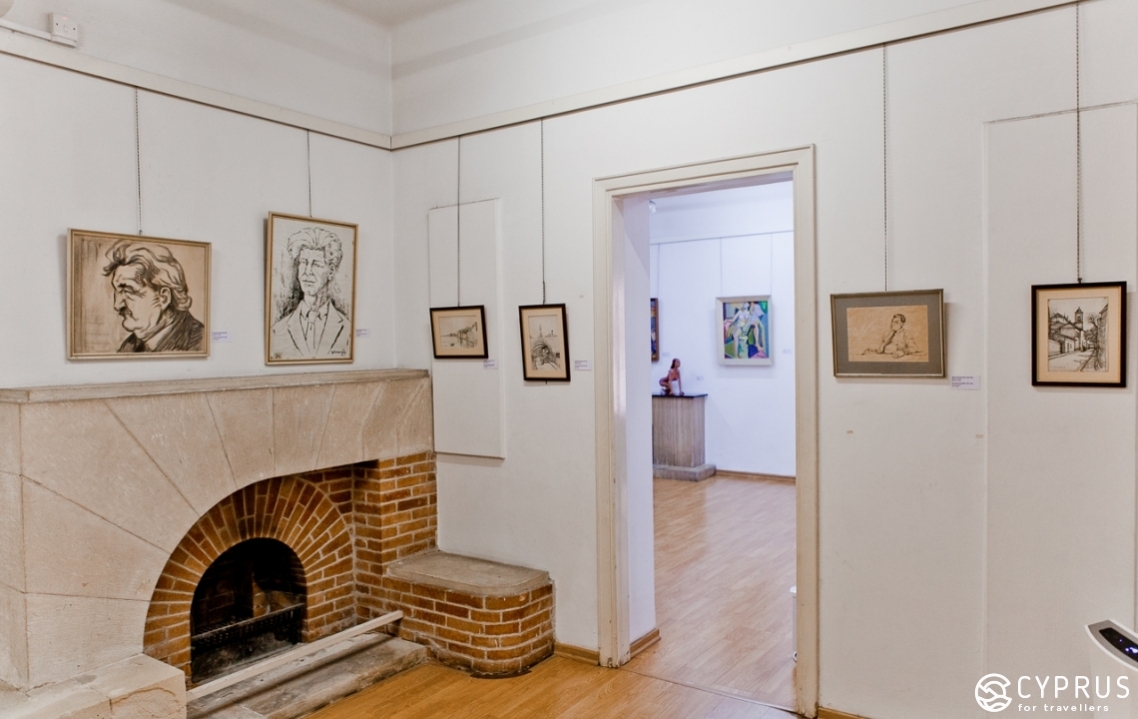
In the same hall, you will also encounter the works of another artist, Panikos Mavrelis (1948-1989). His graphic art was evidently crafted with significant influence from the art of Henri Matisse: it has the same decorativeness and pays excellent attention to contouring. The outlines of male and female figures are drawn spontaneously in one stroke, without the artist removing their hand from the paper.
Mavrelis also fashioned some caricature pieces, such as “V. Kafenio”, which was painted on paper with watercolours. This extraordinary watercolour work attracts the viewer’s attention as there is no transparency or lightness to it; the traditional poetic sentiment is absent. On the flip side, Mavrelis has carefully drawn human figures of regulars in a cafe, in addition to the cafe owner, confidently applying strokes and broad smears with the use of saturated colour.
As I’ve mentioned already, in the halls of “old school” paintings and graphic art, sculptures have also been placed to add another element to the display: The room of V. Ioannides houses several plaster-based works from Chrysymos Simeonidis (“Nymph”), as well as an abstract composition, crafted from ceramic, by Valentinos Charalambous (born in 1929) — one of the most famous Cypriot ceramics masters, who was widely regarded all over the world.
And here is Ksanfos Hadzhisotiriou (active from 1920-2003), another artisan, who through personal experience was clearly under strong influence from the expressive art of A. Modilyani and his taste for African plastic arts. The piece “Kakopetria” appeals with its imagery and lyrics, as well as the artist’s warm attitude towards the image of a famous, ancient village on the Troodos mountain range (for more information on this village, please see our review) in the form of a maiden, eternally young and full of sorrow.
Another painter, whose creations are also noteworthy, is Panagiotis Kyprianou (1919-2001), a representative of naive Cypriot art. His pictures are full of drama and emotionally describe the most tragic, recent pages of the island’s history.
Let’s head on to the hall to the right of the entrance: here we can see the works of Nikos Antoniadis (1925-1989), inspired by impressionism and realism (evidently a retrospective of different years). His most famous work is the oil on canvas “Portrait of Archbishop Makarios S” (1966). There are also paintings of romantic, colourful landscapes, such as “Sinai” and “Egyptian Landscape” (oil, plywood).
Nearby, I was drawn to some lively, expressive works, crafted using a mix of techniques: watercolours and pastel on paper. They belong to one of the oldest artisans in Cyprus, Vasilis Vryonides (1883-1958): genre-specific scenes, portraits, still life art. In my view, out of the most exciting pieces in the Gallery collection, it’s worth mentioning “The Church and Well” and “Two Pomegranates” (don’t forget: pomegranates are a very symbolic object for Cypriots, which embody prosperity, opulence and… fertility). There’s also the “Portrait of a Girl”, full of warmth and tenderness (oil on plywood).
The second (after Lukia Nicolaidou) female artist from the old range of maestros, whom we can encounter in the Museum halls, is Avgi Shakali (1916-1979). She applied an abstract manner to create “Hillsides” — a meaningful canvas which allows you to feel the beauty and might of the Troodos range when you stop and stand before it. Avgi has affectionately transferred these feelings through impressive colour combinations and broad expression of strokes.
Having finished inspecting artworks from past years and walked along the crossing, you will find yourself in the contemporary section of the exhibition. The large spaces across the three floors of the new building are devoted to monumental, striking works, full of expression. They belong mainly to young artists: Cypriots and several foreigners, for whom Cyprus has become a second home.
Young Masters
This name was given to both the genuinely young artists of Cyprus and to those representatives of the older generation who were, in our eyes, more contemporary when compared with the canons of the “old school” — they mostly gravitated towards realistic shapes and masters of early modernist trends. New painters not only consciously search for other, atypical forms of expression, but the subject of their work has changed significantly. The material used to embody specific art concepts is not always itself “artistic”. As you’ll see, in the new section of the art collection, the “youth”, who are now higher in number, are displayed in literally one-two works.
Here are the works of Andreas Paraskev — symbolic landscapes, such as “Secret Seashore…” (oil on canvas). The trend of times has also been reflected in the youth “line-up”, as female artists have notably been included. For instance, the painting of Eleni Voulou — “Figure” (oil on canvas), an image of a female dancer performing an eccentric, excited dance, where the rhythm is echoed by red flashes in the red background. There really are many unusual, striking pieces on display here. The “Sea Landscape” of Maria Ladomatou, for instance — a monumental work with a palette containing large spots of local colours.
There is also plenty of abstract art: “Arena” by Dora Ofi (Oti) which depicts a dramatic experience from a scene in a bullfight; John Corbidge (1935-2003) — “Landscape”.
The works of our contemporaries differ due to their sharp social orientation: the creator's reflections on their place in the surrounding world and reality. This can be observed in the monumental and symbolic works of neo-surrealist painter Claudius. They contain a combination of pictorial and graphic applications (acrylic, oil on silk canvas), while the artist addresses the solution of artistic tasks, drawing the attention of a broad audience to famous images.
From the contemporary sculptors on display in the collection, we can encounter the works of Fedon Potamitis, such as his “Love” — a sculptural grouping, depicting a pair of lovers (cement, casting, 1967).
The graphic art in the collection is superbly represented by “Theomas” — a large piece belonging to Alexis Temistokleous (print, graphic design, paper).
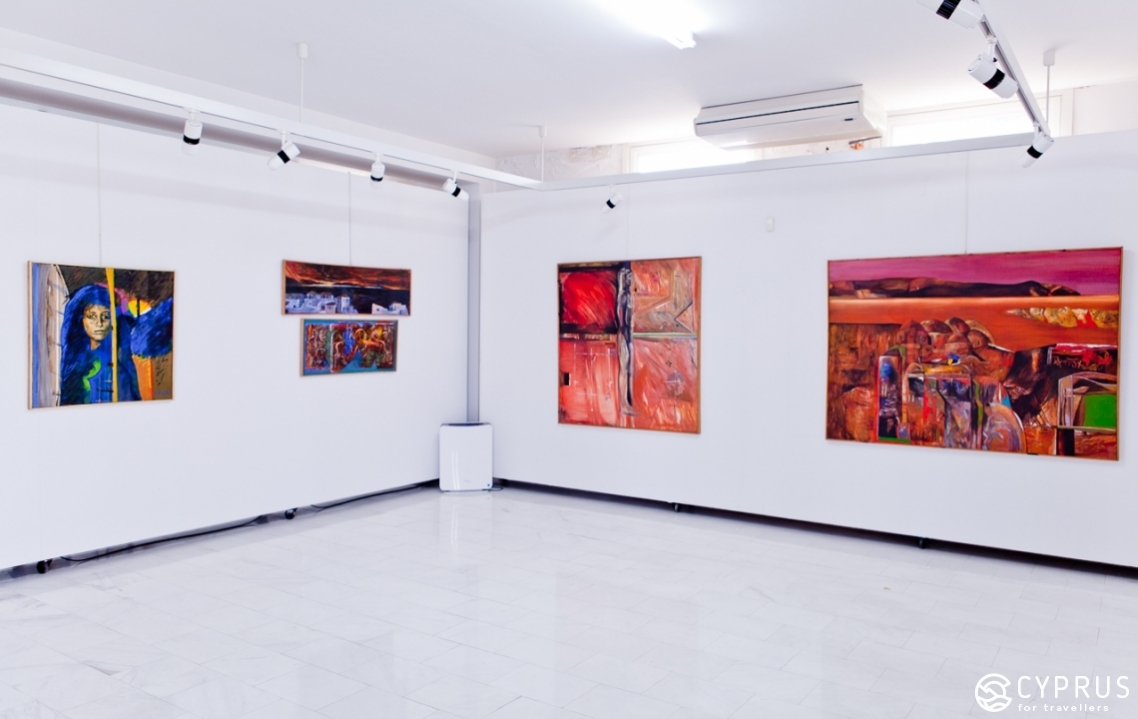
Nikos Kokkines and Constantinos Zanetos are names linked with experiments applying a mix of techniques — a combination of fibreglass and oil-canvas painting.
In the hall, we can encounter the graphic work of Stelios Votsis (1929-2012), whose creative work is rather widely displayed not only in this collection but all over Cyprus (you can find his works in practically any art gallery and serious art salon). His style is regarded as “structural abstraction”.
You’ll further come across the work of Andros Chrystofilou — “Nameless”.
The bronze casted figures by the sculptor Vera Arlalidou — “Couple-1” and “Couple-2” — will no doubt attract a great deal of attention.
And of course, like all serious art collections in Cyprus, the Limassol gallery wouldn’t be complete without a painting by the famous avant-garde artist, Stass Paraskos (1933-2014).
It’s worth noting that amongst the works of contemporary art, the mosaic of Kulla Christou, “Dream”, is also on display. This involves modern techniques where not only traditional mosaic smalts and stones are used, but also а combination of textured, beaten tiles, which no doubt add a level of expressiveness and dynamism to the artist’s work.
As such, all the more or less contemporary styles in Cypriot fine-arts (figurative and abstract) are on permanent display in the exhibition.
Please Note: the Limassol municipal public library has been temporarily situated on the first floor of the gallery’s new building (as we were informed, until the end of 2017). What’s interesting about the library? Well, its superb collection of literature, at the very least (a rich archive of books, totalling 60 thousand tomes). That said, it only provides its resources for work and reading to students, or generally to people who are visiting. In all the remaining book reserves, it’s a mandatory requirement upon registration to present confirmation of your permanent residence in Cyprus. We’ll inform you of the address where you can find a “tourist friendly” library if you’re planning to visit Limassol from 2018 onwards.
Library address: the corner of Ayia Andreyou and Georgiou Karaiskaki street, Limassol
Having visited here, we noted that the library reading hall had been equipped to benefit not just its readers. Lessons are periodically held in the library rooms for children, including creative activities, (we can see what the children have created as visual proof), as well as lessons for school pupils and other literary events.
After passing through the temporary library room and reading hall, while doing our best not to make any noise, we found ourselves at a marble spiral staircase leading visitors up and down. By the way, a lift operates in the gallery for visitors’ convenience.
As we feasted our eyes on the vista of the Limassol seafront through some large windows, we headed upstairs…
The Private Collection of the Vassiliadisovs
Here you can familiarise yourself with a rather curious collection, which was donated to the Municipal gallery by the family of Marios Vassiliadis — a collector native to Limassol (to be precise, the exhibits were passed on by B.M. Vassiliadi and Aig. B. Vassiliadi). То а large extent, the collector was evidently interested in modern art; by and large, the creative works of his contemporaries, who worked in various spheres. The collected works, owing to this interest, represent the most extensive range of all trends and styles, which Cypriot and Greek artists attempted and in which they highly succeeded: from symbolism, abstract art and romanticism, to realism and hyperrealism.
Important Detail: any accompanying information about the collection and its “pearls” is currently absent. In the future, all the halls plan to be fitted with necessary explanations for clarification. The opportunity is always there, however, to address the Museum employees for assistance.
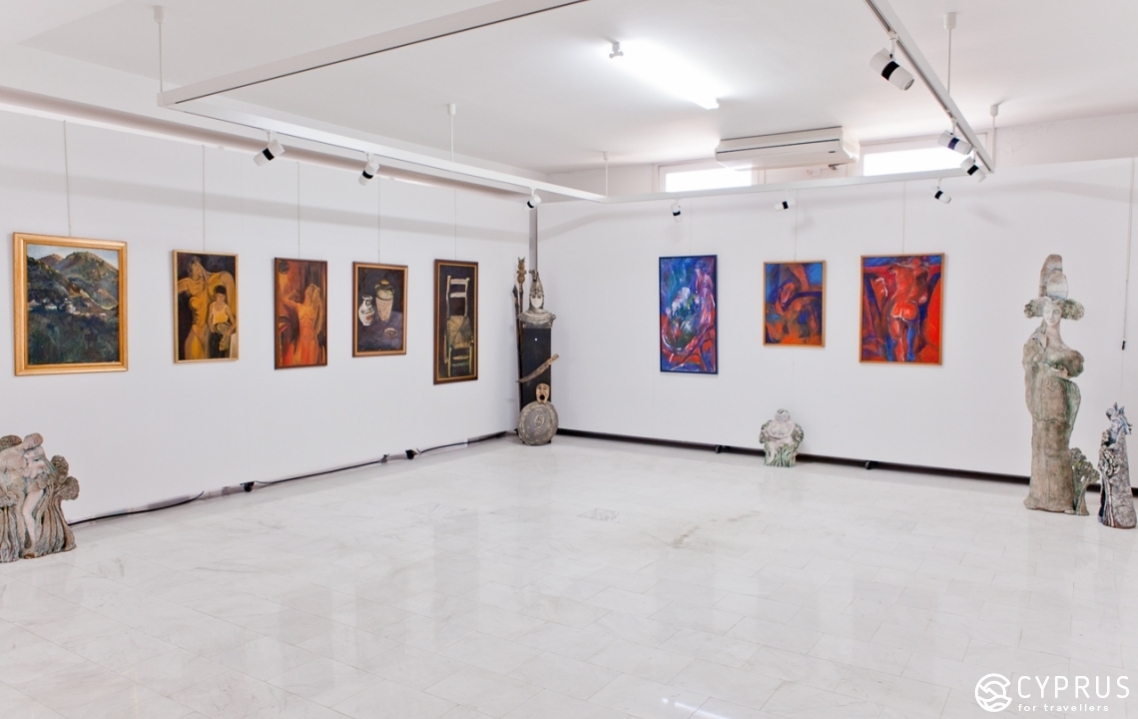
And so, while we were wandering around inspecting the halls, a little lost, Miss Rania, one of the museum employees, hurried to our “aid”.
“…As you can see, the collection of Mr Vassiliadis is very diverse. Not only are there Cypriot and Greek works, but also pieces from the British artist John Corbidge (one of his paintings is situated in the lower hall, remember?).
These are the works of the famous Cypriot artisans, Andreas Karayan (born in 1943), Andreas Haralampidis (1939) and Stella Michaelidou (1941, also a native to Limassol, whose works are characteristic of hyperrealism: views of the Old Limassol port).
Here you can encounter the ceramic sculptures of Pambos Miklis: as a rule, they are generously decorated, lyrical works, depicting separate figures, half-figures and couples. His characters almost always (with rare exceptions) have their eyes closed”.
One more thing: those who have, at least once, been to Cyprus and walked along its city alleyways, will definitely have met the works of Miklis in many galleries and art-salons (edit by E. K-T).
In this collection, however, it’s the paintings of P. Miklis which we can meet: yet again we were taken aback by the sensuality (like with all his creative works), added with the vibrant colours in the canvas, depicting the Troodos slopes in the setting sun; the mountains cloaked in the evening dusk. The colours lose their brightness and only in some places can the crowns of trees be seen glinting with gold, in the rays of the departing sun…
Miss Rania smiles and leads us further ahead: “… yes, yes, this is one of my favourite pieces. The collection houses other works by Miklis — and they’re of a completely different manner.
Here are several works by the famous artist Xenia Panteli (born in 1950): you can even feel the influence of Picasso’s cubism paintings in them. (We immediately remembered his famous “Les Demoiselles d’Avignon” (1907, the first cubist painting by the artist, which became a meaningful piece in the maestro’s creative works — E K-T.)…
The Cypriot artist, Iorgios Erotokritos (1944-2013) and his symbolic works, for instance, “Twelve months”: a horizontal canvas imitating antique bas-relief, in which the figures of 12, fully nude, young athletes are depicted, with mighty wings behind their backs…”
Yes, — we immediately thought, — after all, in our interpretation of Russian folk tales, everything seems far less untoward and much more innocent (this was a joke, of course, or rather, a pinch of one…)!
We further stopped by the symbolic canvas of the “Three Moirai” — the goddesses of fate (Clotho, Lachesis and Atropos) in Greek mythology, who spun the threads of human fates (known as Norns to the Scandinavians and the Parcae to the Romans).
Miss Rania continues: “… now we stand before a painting of the artist Stephanos, with an image of a very cheerful village landscape. As you can see, the artist has applied oil to an unprimed sheet of plywood (the texture of the wood shines through the light layer of the picture, imbuing the image with an air of naturalness and an authentic pastoral shade). And now we’ll look at several more images of contemporary Christian art: here is the icon of “Saint Katerina”. Have you noticed that the “framing” for the, at first glance, canonical image, is an old window — or rather, a window frame? There is also another unique, atypical piece — an icon — of “Agios Georgios”. It was crafted on a rough, unprimed weave: the Saint is garbed in religious attire and the turban of a resident from the Ottoman Empire. This is because the iconography of this image traces its origins back Ioannina — a locality in Greece which was under Turkish rule for a long time and a namesake to the local lake.
Ksanfos Hadzhisotiriou — this is another critical name in Cypriot art. (You’ve already seen his “Modilyani-inspired” maiden — Kakopetria, right?) Well, this is actually a continuation of the religious theme, a new interpretation by the artisan painter: the female figures appear in a bizarre, ecstatic break, — these pieces resemble the magnificent stained glass window of a cathedral…
By the way, I’d like to mention that every Thursday, in the halls of the Vassiliadis collection, educational programmes are held for children aged 8 and over. Students from all over Limassol come here, as well as those from the surrounding villages. Two teachers lead the lessons with them… generally, we have young visitors on an almost daily basis”.
We thanked our guide and descended to the lowest level of the gallery exhibition.
A Historical Exhibition: Pages of the Heroic Past
So, after finding yourselves on a semi-underground floor, you appear before a permanent exhibit devoted to the struggle for Cypriot freedom, against the oppression of British rule: it features installations, photos of heroes, pictures and sculptures, all of which is intended to reawaken in the adolescent generation that sense of pride for their country and interest in its history. This part of the exhibition is primarily a memorial complex. A decorative panel (a canvas picture) of patriotic orientation is situated in the hall: it features “The Outbreak of the Revolution” — a diptych painted by Andreas Makariou (born in 1955), which depicts the main heroes and role players in the events of that time.
Topic oriented lessons are also held here for school children, allowing young citizens to comprehend the social upheavals and cataclysms which rocked their homeland and have been entered into its annals forever. A lot is devoted to EOKA activity (an underground revolutionary organisation of Greek-Cypriots, which sought to realise the aspirations held by most of the Greek population on the island of uniting with Greece (Enosis) and the dramatic events which followed. This was observed in the complication of mutual relations between both the Greek and Turkish communities. For close to 500 years, they had lived as close neighbours in one country.
The organisers of the exhibition have devoted a large area to the heroic image of Grigori Afksentiou and other national heroes, as well as ordinary citizens who were tortured in the conflict. Amongst the many works of contemporary artists, visitors are no doubt particularly drawn to the installation of Ephi Papamikhail — “With Gold Metres of the Pages of History” (crafted using a mixture of techniques, with printing and stamping).
The works of the artist Antoniou Ioannis (IOANNIS, 1955-2013) are on display, with his installation “Call to the fallen”; Dimitrakis Gyrokostas (born in 1943) — his ceramic composition (red clay, firing) “Off the Struggle”. There is also an absence of collective imagery of Cypriot mothers, many of whom lost their sons, who fought as soldiers, in the years of fighting for liberation from foreign oppression. This was usually a compulsory addition to the topic of heroes. We can see that this topic gradually intertwines with the one that follows — the Turkish occupation of the northern island territories in 1974, as well as the upturned lives and fates of many Cypriots.
It is believed that visiting this part of the permanent display will be appealing to both Cypriot locals and its guests, as it helps to understand best the Cypriot mentality, which is reflected in its artistic culture, and the mindset of those topics that are still raised and interpreted in modern art to this day.
Address: 28th October Street (City Promenade), House Number 311, Limassol
Opening Hours: Mondays-Fridays, 7:30-14:30
Entry: 2 Euro, photography and filming are prohibited Contacts: +357 25583383, +357 25586212, +357 25588401
For additional information: www.limassolmunicipal.com.cy
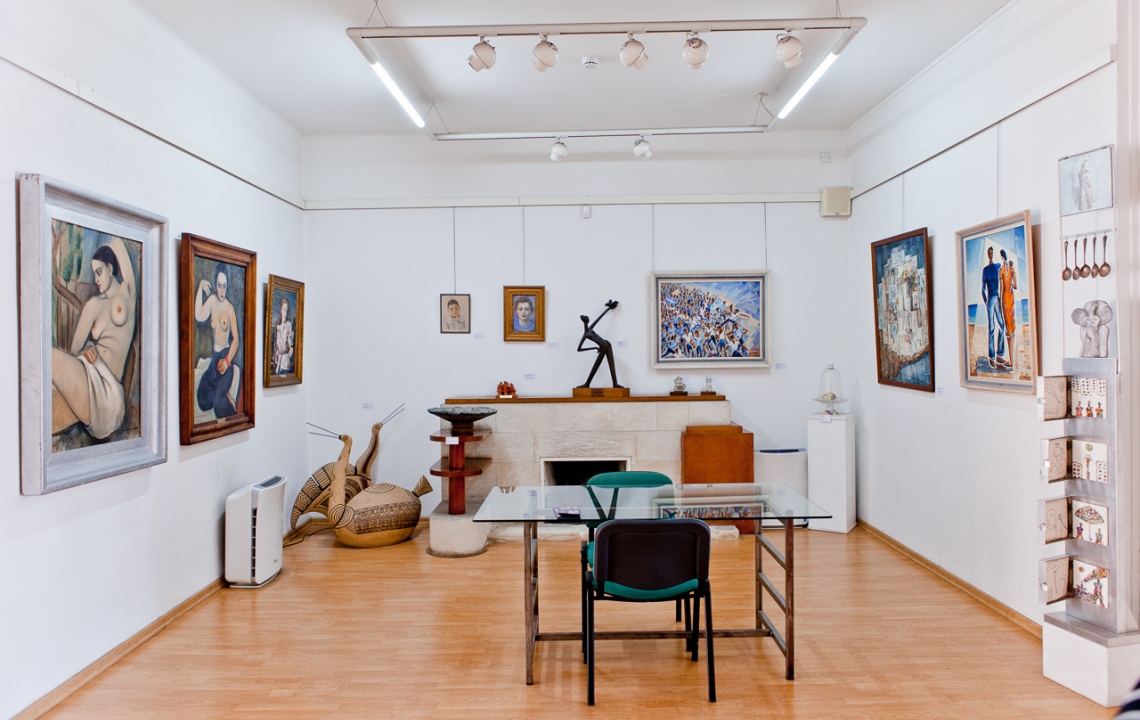
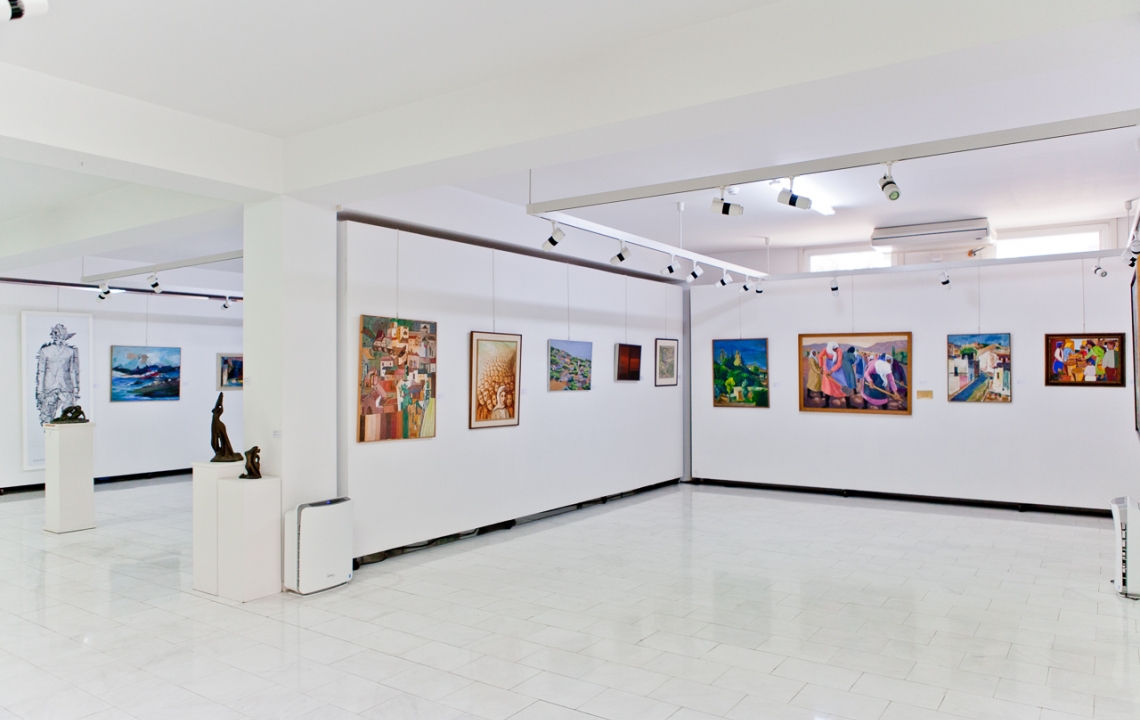
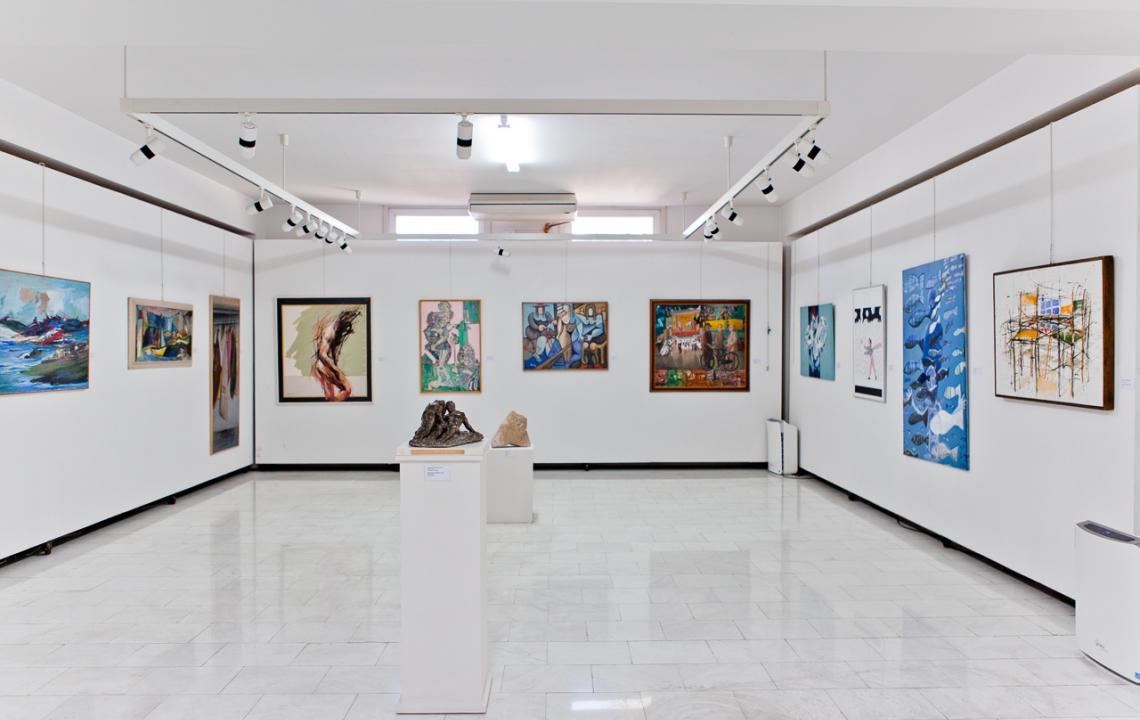
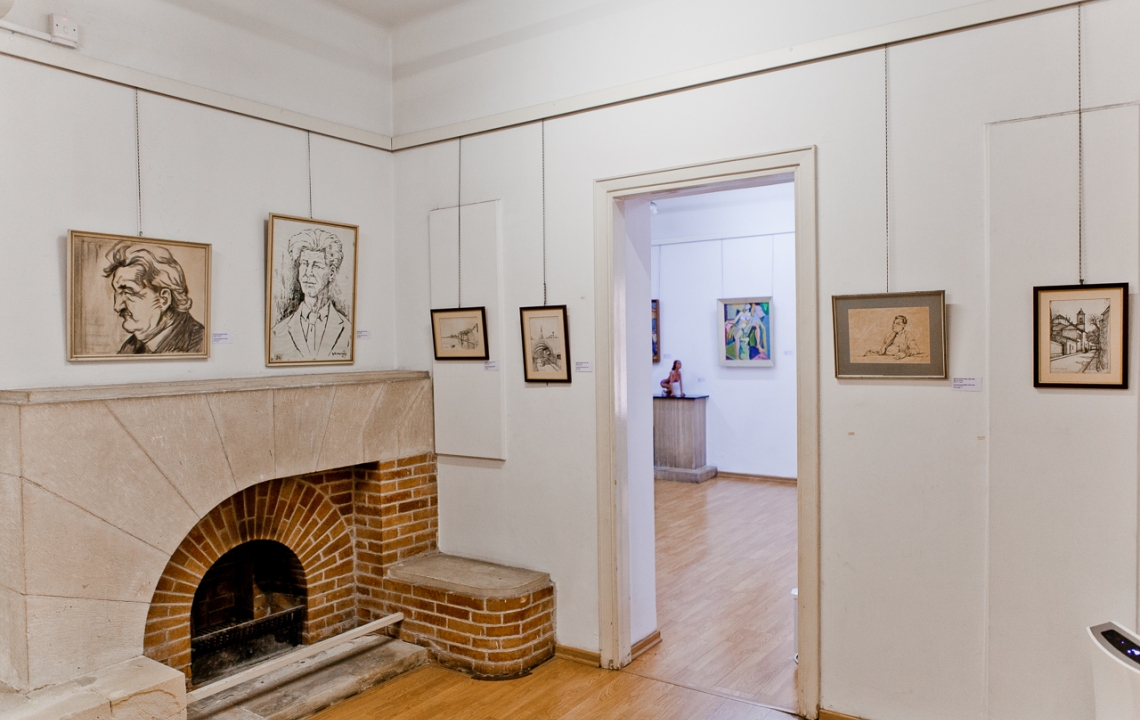
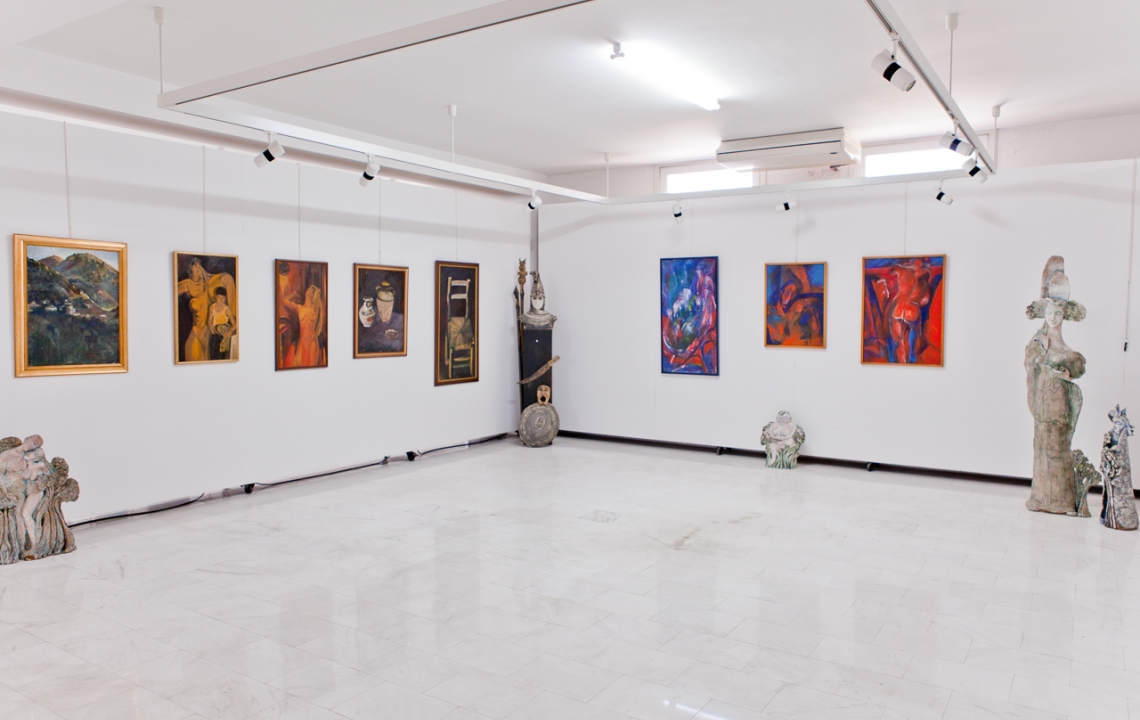
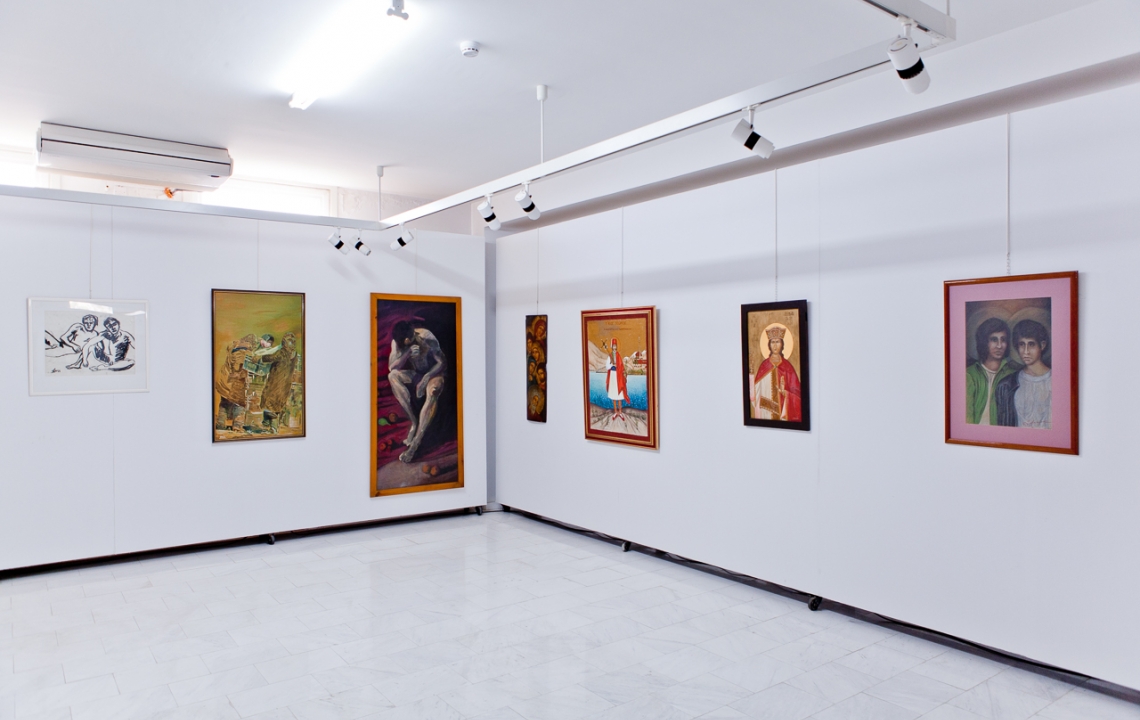
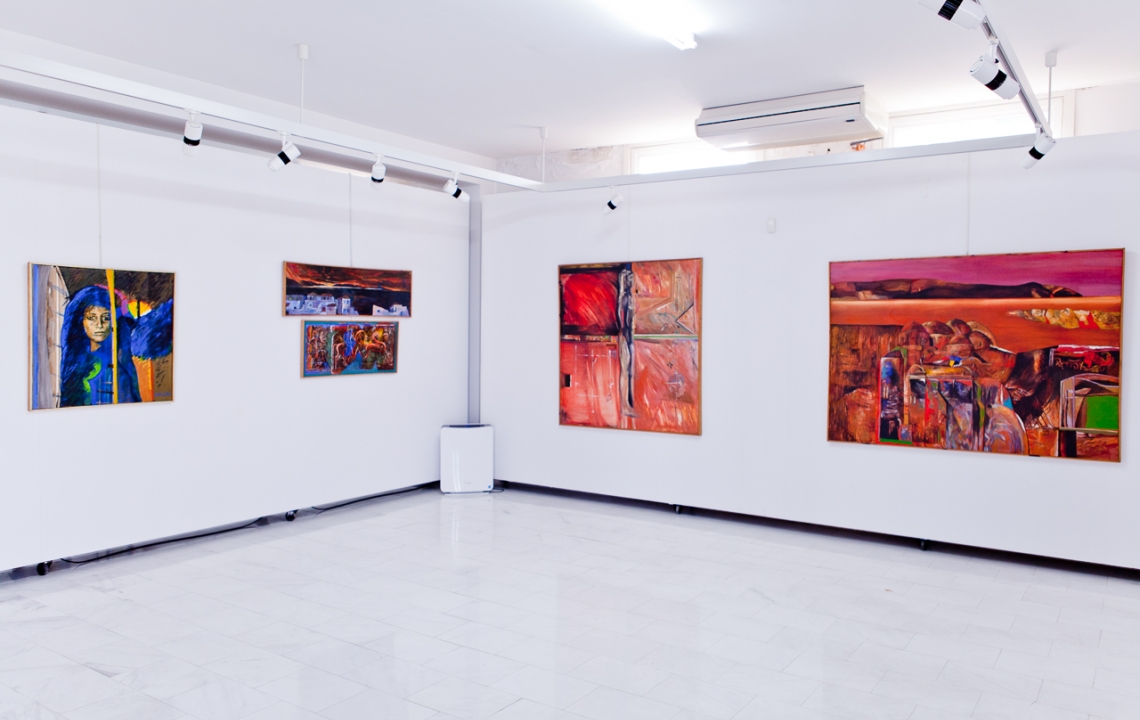
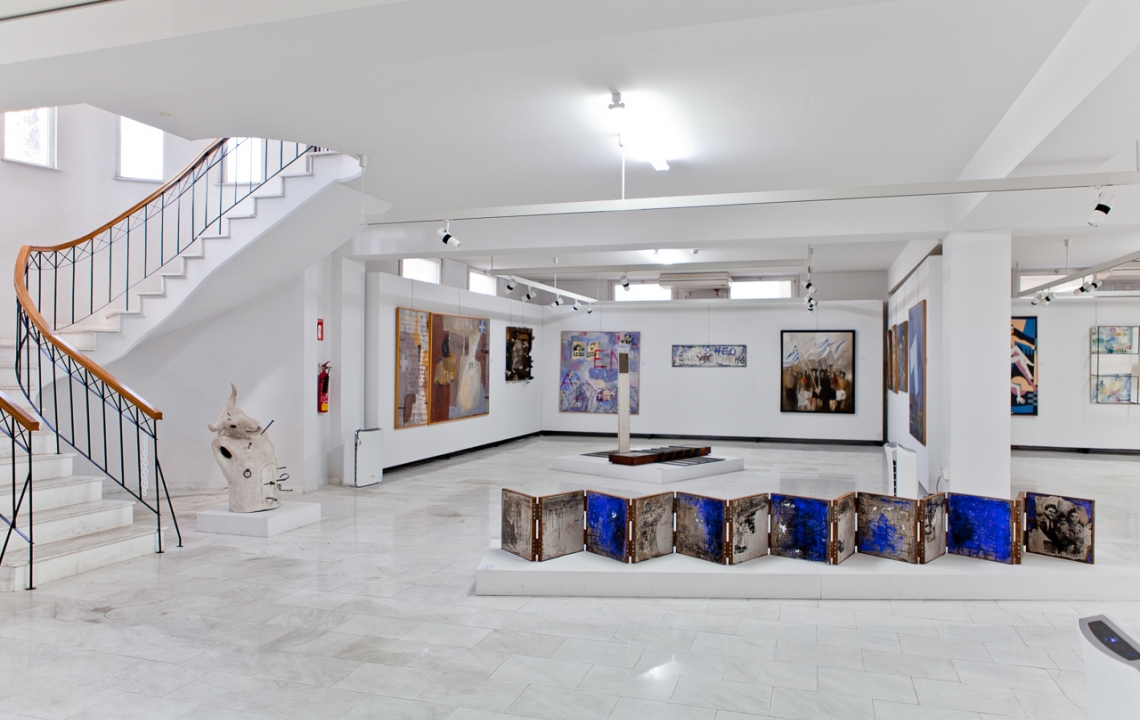
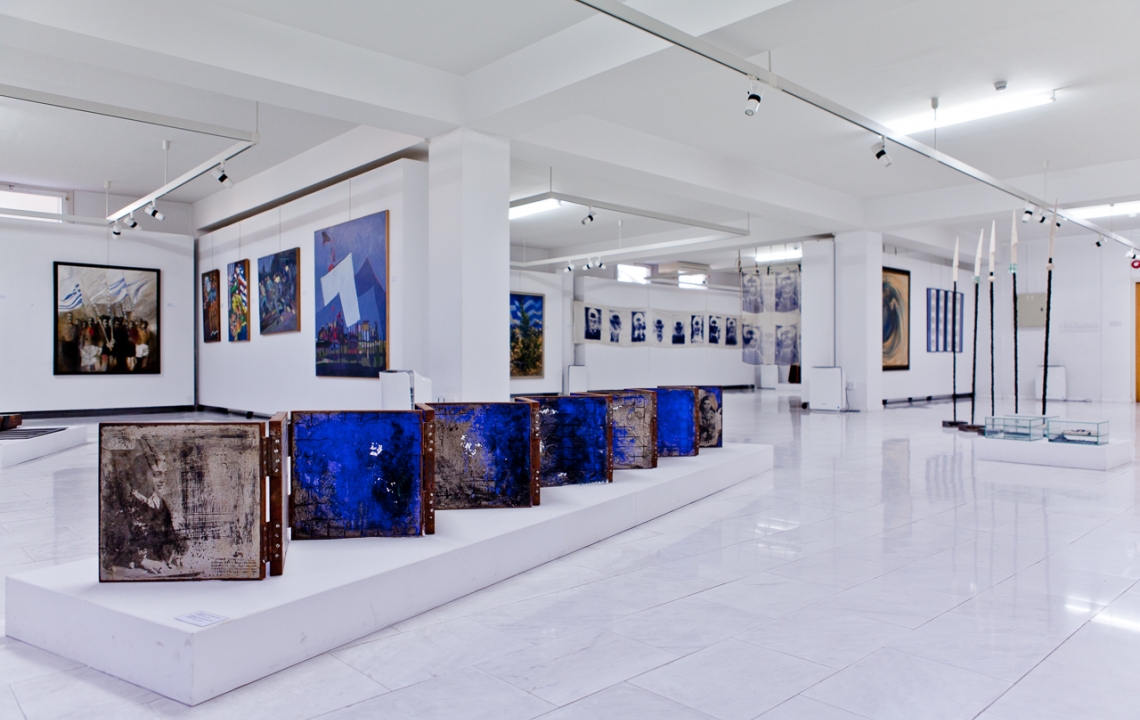
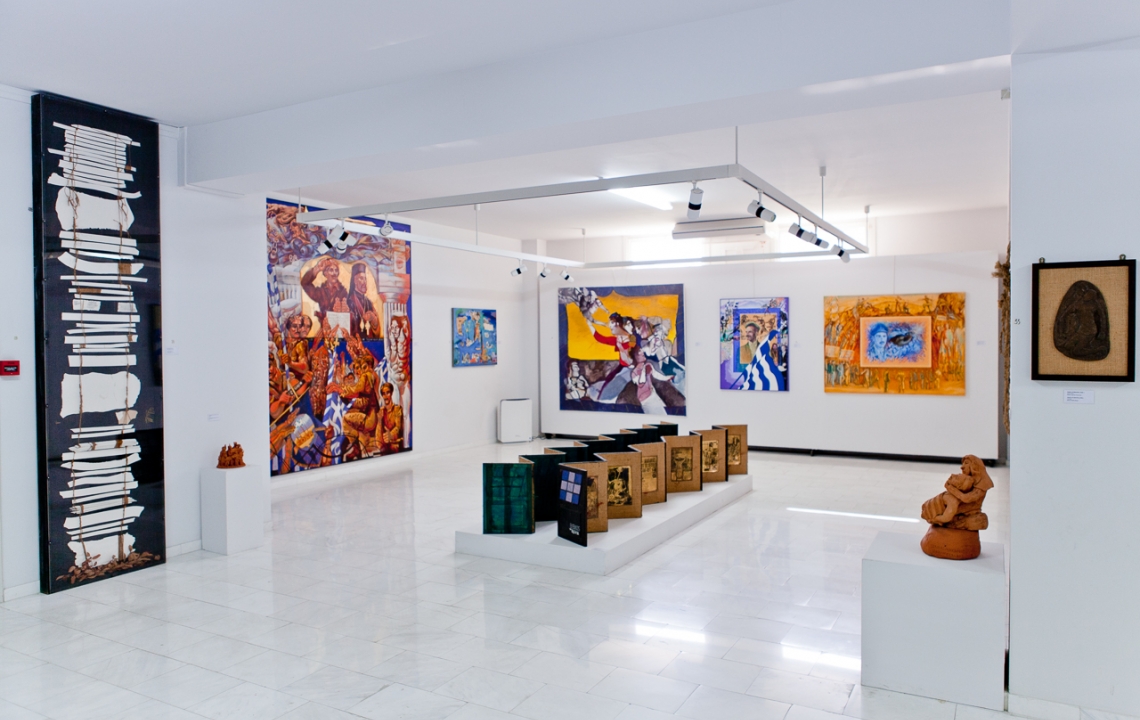
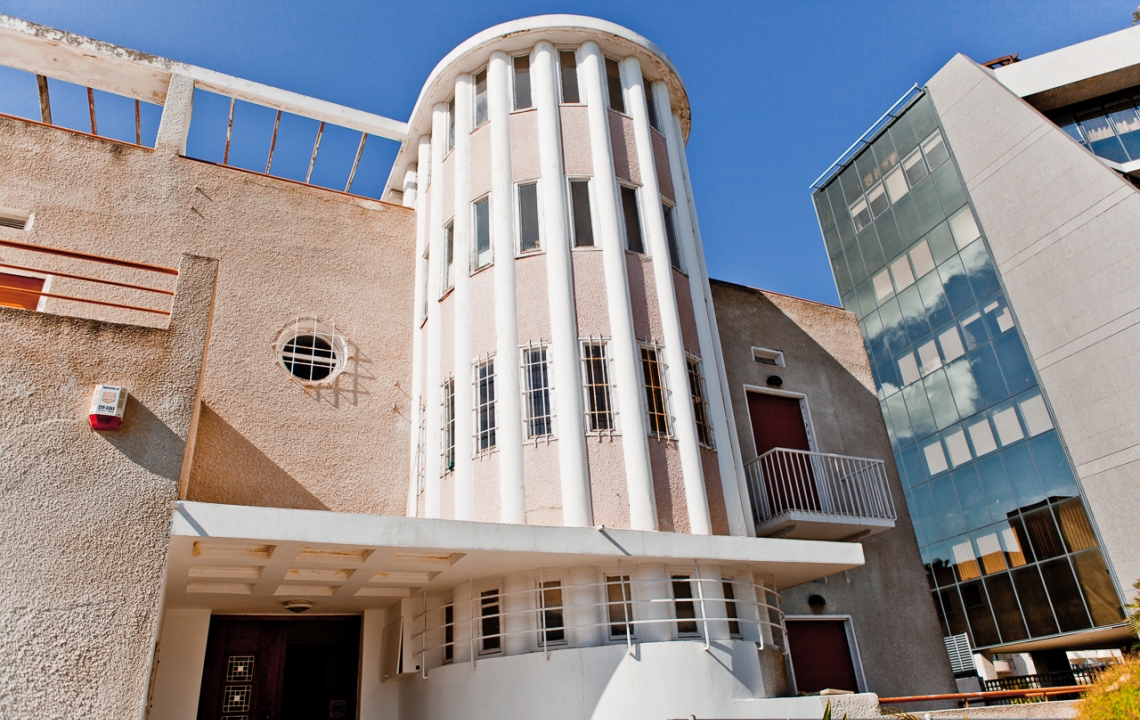
…For those interested:
The personal biographies of famous artists in Cyprus (who are on display in the Limassol Municipal Art Gallery):
Adamantios Diamantis (1900-1994) — an avant-garde artist in contemporary Cypriot art; also a famous realist artist, regarded as one of the “pillars” of local art. All his creative works — from his earliest landscapes to pieces created in his final years — have been devoted to his native homeland. He was born in Nicosia on 23rd January 1900 and studied from 1920-1922 in an art school, after which he entered the London Royal College of Arts, where he graduated with distinction in 1923 (he also, at the same time, received his first prize for a design project from the college). He returned to Cyprus in 1926 and worked until 1962 as a teacher in the Nicosia Pancyprian Gymnasium. Simultaneously, he worked on the development of important social and cultural events. As a member of the Cyprus Ethnographic Research Society, Diamantis collected works of folk art, which subsequently formed the base for creating the collection and the foundations of the Nicosia Museum of Folk Art. The cultural activist himself became the first director of the Museum. In 1976 he was presented with the award of the Academy of Arts in Athens. He received another award in 1993, this time in his homeland, for his achievements in art. The master artist painted hundreds of pictures, where amidst his loyalty to realism, an inclination to abstract shapes could be observed. His early works — experiments with several modern styles, especially — were in the cubism movement. His pictures, which depicted life in the towns and settlements on the island, often radiated а nervous excitement: all his characters were in a state of suspense. The artist participated in international exhibitions in various European capitals: London, Edinburgh, Athens, Sofia, Prague, Budapest, Berlin, Bucharest, Belgrade and Paris.
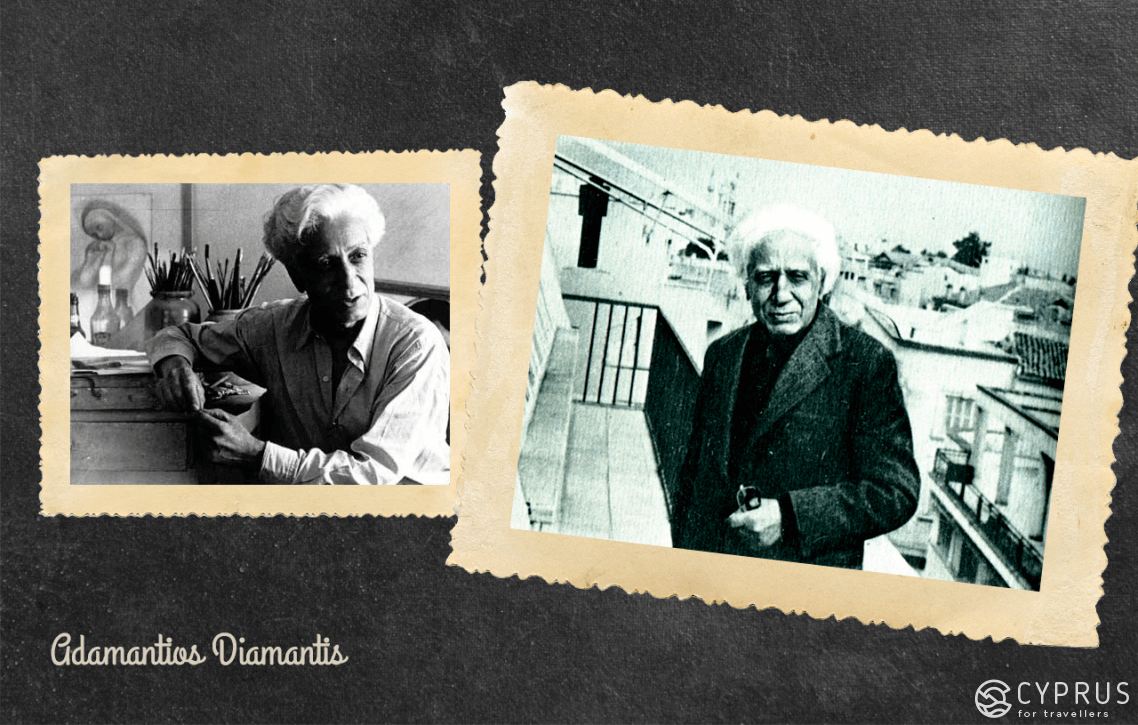
Andreas Karayan (born in 1943)
In his early years, A. Karayan studied medicine at the University of Athens. After graduating in 1967, he moved to London, where he fell captive to the late 1960s atmosphere. Thus, he discarded his dreams of being a doctor, for the sake of art, which he studied at the Central School of Arts (Camberwell). Afterwards, the artist completed a graphic arts course in Germany and lived in Berlin for a long while. In 2001, he represented his homeland at the Venetian Biennale, and then at the Cairo Biennale five years later. He also illustrated the poetic works of K. P. Kavafi. From 1978 to 2004, he was linked to journalism, theatre and also worked as a film critic. After an invitation from the Library of Alexandria in 2007, Karayan settled himself nearby and released a series of works concerning Alexandria (they were part of the library exhibition). He is the author of three novels translated from Greek (“Immoral Tales”). Nowadays, he lives and works in Nicosia, now and again basing himself in Alexandria and Athens.
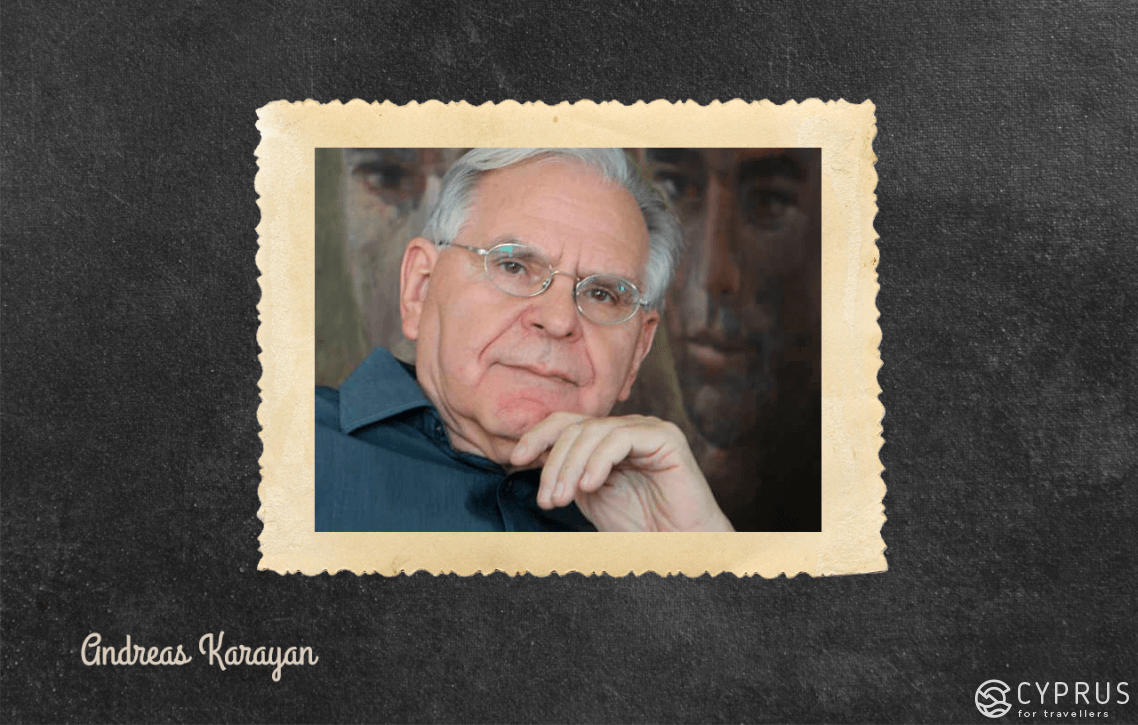
Andreas Makariou (born in 1955) received a state scholarship to study at the Surikov Art Institute in Moscow (1975-1979). From 1979, he worked at the art school of painting and monumental painting, later in the “Tutevol” Department of Monumental Art. In 1982, he was awarded the top prize at the Moscow Academy of Arts for defending his diploma “A Momentary Silence”.
In 1985, his works “Battle of the Centaurs” and “Decameron” received the “Grand Prix” at the 5th International Triennale of Painting in Sofia. In 1986, he was awarded a medal at the ART-EXPO in New York, at the Jacob Javits Center.
In 1989, Makariou was a participant in the Second European forum of modern art at the European “Delphi” centre, where he presented “Memories from the Future”. In 1991, he founded the “KATHODOS” art group, together with the artists Susan Vargas, Rinos Stefani and Aristotelis — on the study of archaeological sites and the natural environment.
In 1955, he represented Cyprus at the Cairo Biennale with his work “ECCE-HOMO”. In the same year, he took part in the international contest “Art Addiction” in Stockholm and obtained an award for works from the same series as “ECCE-HOMO”.
At the same time, he took part in the “IHTHIS” exhibition, organised by the Peridis Foundation in collaboration with the Greek National Gallery. In 1996, he went to Cannes with his “heroes” series and some other experimental works.
Andreas Makariou is one of the most represented contemporary artists in Cyprus and undoubtedly one of the most active: the majority of his works are exhibited in collections abroad. He lives and works in Paphos.
Andreas Charalambides (born in 1939)
After leaving his hometown of Paphos, he studied in his early years at the Royal College of Arts under the tutelage of Terry Frost, later beginning his own international career at a high level. He is nowadays widely renowned as a representative of the so-called Cypriot “Men of the Sixties”.
His paintings were executed with a high level of mastery from the “old school” days, yet they had an abundant air of modernity. He created his own inimitable painting language, which was founded, in essence, on an immersion into Mediterranean culture, of 16th-century “Italians” and 17th-century “Dutchmen”; it was also based on the early works of Picasso and Modigliani, as well as medieval fresco art and mosaic art from Siena and Paphos. The creations of A. Charalambides were influenced mainly by the myths and legends of Ancient Greece.
Up to now, he has led a multitude of individual and group exhibitions in Athens, Nicosia, London, Alexandria, Beirut, Baghdad, Kuwait, New Delhi, Amsterdam and New York. You can find his works in many state and private collections in Cyprus, as well as abroad.
Valentinos Charalambous (born in 1929) — he was a ceramic artist from a family of traditional potters (Famagusta), who studied at the Central School of Arts and Crafts in London. After graduating with distinction, he worked as a technical aid and afterwards in the LEACH Pottery workshop (1950-1951). In 1952, the artist returned to Cyprus to help his father. Five years later, in 1957, he received an offer from the Ministry of Education in Iraq to create a ceramics faculty at the Baghdad Institute of Fine Arts. In 1960, he was instructed with creating an equivalent faculty at the “Tahrir” College for Girls, also in Baghdad. In 1967, the ceramics artist became a member of the recently formed Academy of Fine Arts at the University of Baghdad: here, he headed the Department of Ceramics (until 1983). He later returned to Cyprus, albeit still maintaining his creative and social ties with Iraq, where he has always been highly valued for his contribution to the development of national art, as well as for his work as an outstanding artist and teacher. Valentinos Charalambous still collaborates in the sphere of culture with the Ministry of Education and Culture of the Republic of Cyprus, participating in the development of Cypriot-Arab cultural relations.
Vasilis Vryonides (1883-1958)
Born in Limassol, Vryonides was an artist who had a brief stint attending the Venice Academy of Fine Arts (1900). He lived there for the next ten years, working on independent studies and perfecting his technique. In 1922, he headed to Paris and attended lessons at the Académie Grande Chaumiere & Colarossi, as a free student. His works have often been on display in Cyprus. It is considered that modern art in Cyprus began in particular with Vryonides; a street in Limassol has also been named after him.
Victor Ioannides (1903-1984) — Ioannides began his studies at the School of Fine Arts in Athens (1923-1929), where the future artist was under the tutelage of teachers G. Iakovides, S. Vikatos and Nikolaos Lytras. While studying, Ioannides worked as a full-time caricaturist at the newspapers Ελεύθερος Τύπος (1923-1924) and Ελληνική (1925-1929 гг.); he was also an illustrator for the Great Greek Encyclopedia. In 1930, the artist returned to Limassol, and six years later, together with G. Fasoulliotis, he founded “Atelie” — the first design and advertisement workshop in Cyprus. Together they published the satirical newspaper Тο Γέλιο» (1936-1937). He also worked as a drawing teacher in schools (1931-1933, 1942-1965). His creative works are dominated by landscapes and scenes from rural and urban life. He demonstrated his mastery in the genre of portrait painting, still life art and nude art. The artist’s works have been widely displayed at both individual and group exhibitions in Cyprus, as well as abroad (in Greece, Egypt and other countries). In 1963, he represented Cyprus at the Alexandria Biennale.
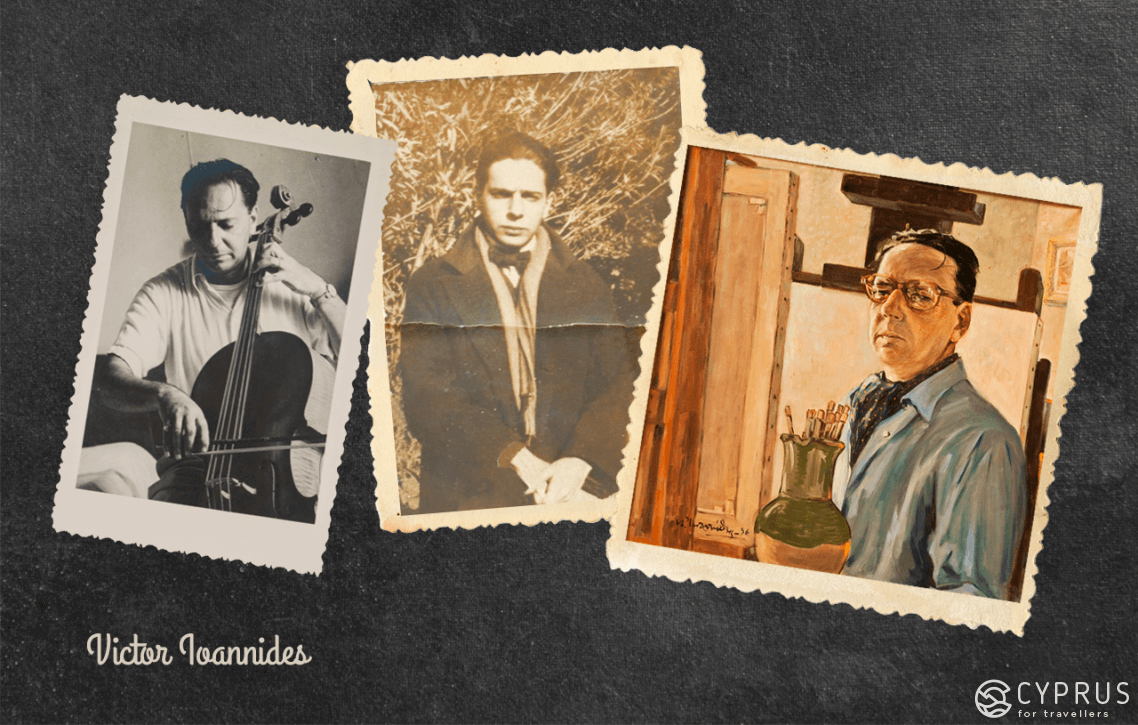
John Corbidge (1935-2003)
Born in England, the artist spent the early years of his education at the Slade school in London. His works, which were significantly influenced by the creations of A. Diamantis, have travelled over many countries, always receiving positive reviews from the public and critics. They have most often been on display in Italy. The artist’s paintings differ due to the palette richness, as well as their great sense of form and composition. He gave preference to elements of art from Byzantium and ancient civilisations — seeking to “synchronise” them in his works. We have just seen his “Landscape” piece at the Limassol Gallery.
Dimitrakis Gyrokostas (born in 1943)
Born in Bellapais (Kyrenia region), he lived there until 1974, when his family were forced to flee due to Turkish occupation. Gyrokostas is a representative of naive art, who works with traditional ceramics. He is a member of the Cyprus Chamber of Fine Arts (Е.КА.ТЕ.).
His early years, which the future artist spent surrounded by magnificent views of the countryside, had an influence on the construction of his original art style. They also impacted his approach to sources of folk art and the collective mentality amongst Cypriots. In fact, the results of archaeological digs in the Vouni settlement (dated 2500-1900 B.C.), which were discovered near to Bellpais and are on display at the Cyprus Museum of Archaeology (Nicosia), also shaped the young artist. On 27th December 2004, he was presented with a diploma “for contributions to the formation of modern, cultural originality in Cyprus” by the President of the Republic. He is most famous for his red ceramic compositions (housed in the Limassol Gallery).
Iorgios Erotokritos (1944-2013) — a native to the village of Lambousa (near to Kyrenia), he learnt the pictorial art in Athens and London. Having finished his studies, he moved to Athens, where he worked as a painter, while simultaneously studying restoration and wood carving. He later returned to Cyprus and lived in Limassol from 1980 to the end of his life.
Ksanfos Hadzhisotiriou (1920-2003) was a Greek artist and interior designer. Born in Famagusta, he spent his young years studying business at the University of Beirut (1938-1940). He later turned to study arts at the London Central School of Arts and Crafts (1951-1953) and interior design at the Byam Shaw School of Art (1959). Hadzhisotiriou led several exhibitions in Cyprus and on an international level: both for individuals and groups. In Famagusta, for instance, his works are now on permanent display at the “Manastiri” exhibition; he was later exhibited at Peter’s Gallery in Limassol, where he lived out his final years. For his creations, the artist received a multitude of awards, as well as world acclaim.
Xenia Panteli (born in 1950)
Born in Nicosia, she studied from 1969 to 1973 at the Ecole des Beaux-Arts d’ Aix-en-Provence school of fine arts in France. While there, she was awarded, in 1972, a diploma of fine arts (Attestation d’ Etudes Plastigues) and received a national diploma in fine arts the following year. Soon after, X. Panteli returned to Limassol, where she taught drawing in secondary schools (until 1986). In 1979, together with other artists, she created the “Art Workshop” in Limassol. She has exhibited her works at several personal exhibitions.
Lefteris Economou (1930-2007)
Born in Frenaros, the future artist learnt his profession at Saint Martin’s School of Art (1949-1950). He later studied at the Sir John Cass College in London (1950-1954) and the Gold Smith's School of Art at the University of London (1954-1955). In 1953, he was awarded a National Diploma in the field of design.
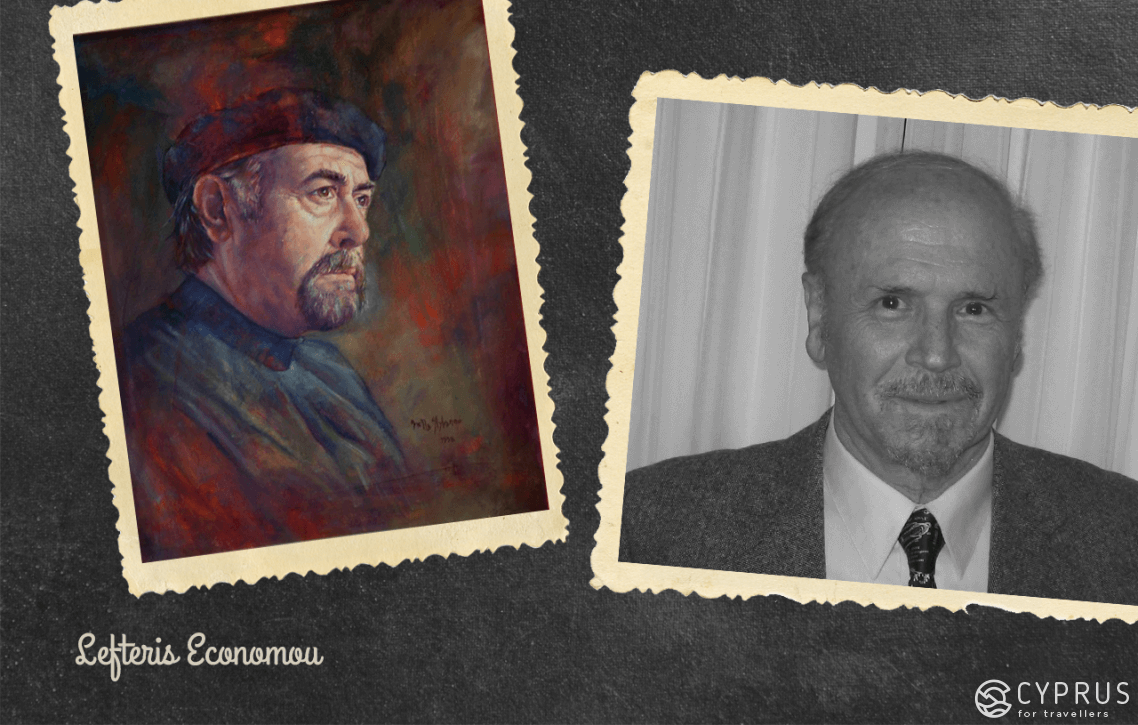
Loukia Nicoalidou (1909-1993)
Born in Limassol, she finished secondary school and then took a correspondence course for a year, studying rudimentary painting at the ABC School of Arts in Paris. In 1929, she became the first Cypriot woman to study abroad, namely at the Académie Colarossi in Paris. Afterwards, Nicolaidou passed the enrolment exam into the Higher National School of Fine Arts, where she studied in the famous workshop of Professor Lucien Simon. After graduating, the young artist returned to Cyprus: soon after, in April 1933, her first personal exhibition took place in the Papadopoulos mansion in Nicosia.
Interestingly, the local public reacted negatively to her works. In 1937, she left Cyprus for London, to live with her elder sister. In 1939, L. Nicolaidou participated in a group exhibition with other masters, where she received critical acclaim. A little later, after marrying the shipowner Ioannis Vassiliou, she gradually withdrew from working in the arts.
Stass Paraskos (1933-2014) was one of the most famous Cypriot artists, native to the village of Anaphotia, south of Larnaca. The style of Paraskos’ paintings possesses a symbolic yet non-naturalistic character. He uses bright colours, working on small scenes, all set in his childhood in Cyprus. He was greatly influenced by the Byzantine Church of Art in Cyprus, as well as outstanding French masters, such as Paul Gauguin and Henri Matisse. The works of Paraskos have been on display in many counties, including Great Britain, Greece, the USA, Brazil, India and Denmark. In 2003, the outstanding art historian, Norbert Lynton, dedicated his book to Paraskos. Today, his works are housed in the State Collections of Cyprus, the National Gallery of Greece, the Collection of the Arts Council of England, the Art Collection of the University of Leeds, the Leeds City Art Gallery and the Tate Gallery (Tate Britain), in London. In 2008, he was awarded an honorary doctorate by the University of Bolton for his services to art and art education. In 2017, a major exhibition at the Paphos art gallery was held in his honour, as part of the ‘European Capital of Culture’ project.
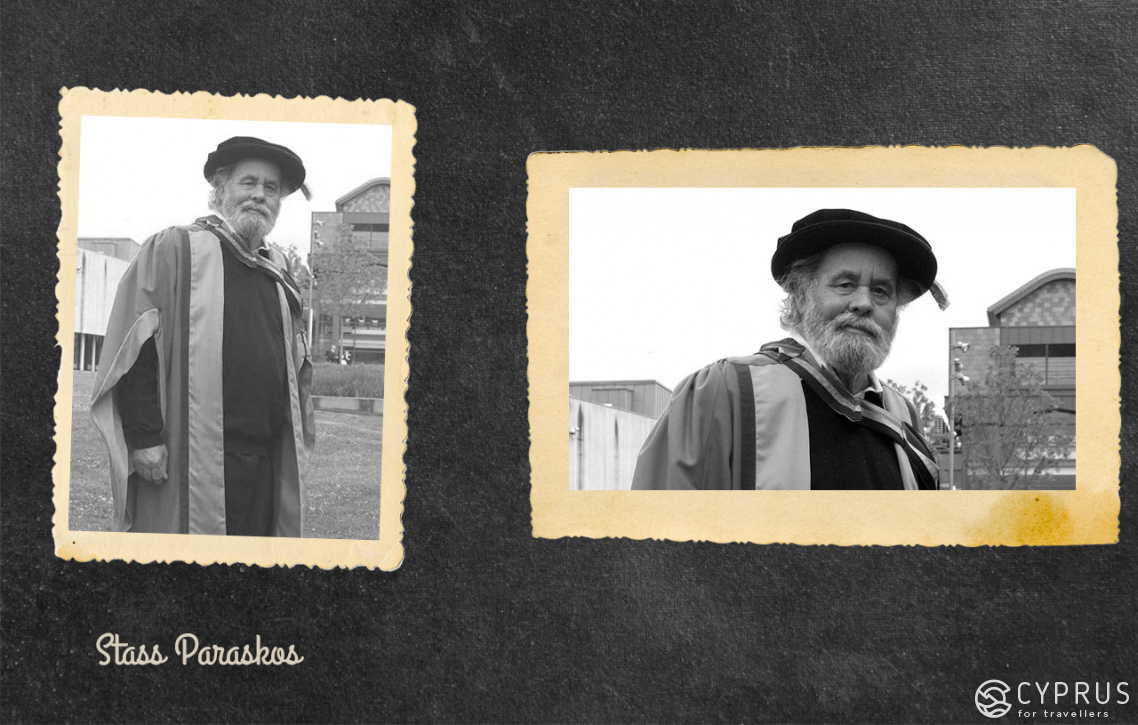
Stelios Votsis (1929-2012) — born in Larnaca, he had already demonstrated a talent for painting in his early years. He began to stage his first exhibitions while still studying at the Pancyprian Commercial School. After graduating in 1949, he headed to post-war England to fulfil his dream of studying art (at Saint Martin’s School of Art, then at the Sir John Cass College and the Royal Academy of Fine Arts). He was distinguished for high standards to which he insisted his works adhere: once in his youth, he destroyed almost all of his paintings. Today, his paintings can be found in a series of collections, including the National Gallery of Greece and the Greek Ministry of Culture; in the Presidential Palace of Cyprus and in other public and private collections across Cyprus. They are also on display in Greece and beyond. He had a series of collaborations with Stass Paraskos: both artists often created joint works, while preserving their own respective styles — these paintings are today known as “pomishiarika” (Cypriot dialect for ‘dual ownership’). Some of these joint works were displayed in Nicosia, in 2007, at an exhibition inaugurated by the British art historian Norbert Lynton. Votsis received the Raskin Prize in painting and a bronze medal (a European prize) in a painting contest held in 1973, in Ostend-Belgium. For contributions to the development of culture in Cyprus, he was presented with an annual honorary award from the Cypriot Ministry of Education and Culture.
As such, Stelios Votsis was one of the leading activists in modern art on the island and a co-founder of the Cyprus Chamber of Fine Arts (Е.КА.ТЕ).
Stella Michaelidou (born in 1941) was an artist from Limassol, who studied at the Athenian Technological Institute, before continuing her study of painting at the Académie de la Grande-Chaumiere in Paris. She has exhibited her works in Cyprus and abroad (exhibitions in Greece, Yugoslavia, Germany, Hungary, Monaco, Iraq and Australia).
Takis Frangoudis (1901-1978) — a native to Limassol, he attended painting classes at the Athens Higher School of Fine Arts, under the tutelage of Professors K. Iakovides and B. Bokatsiambes. The artist wrote reviews and articles on the history of art. His works have been on display both in Cyprus and abroad (in Greece and Great Britain).
Telemachos Kanthos (1910-1993) — born in the village of Alona, a mountainous region of Pitsillia in Cyprus, he has been regarded by art historians as the “father” of modern painting in Cyprus. His works are characterised by their diversity; however, his favoured motifs consisted of the hills surrounding his home village. Some of his most distinguished works are dedicated to dramatising the 1974 Turkish occupation of Cyprus, where he describes the sufferings of Cypriot refugees, who were forced to abandon their homes and lost loved ones in the process. We have seen two of the woodcutting pieces crafted by Kantos — “Girl by a Fountain” and “Girl under a Nut Tree”.
Chrystoforos Savva (1924-1968)
Born in the village of Marafovuno, he spent his youth studying art at the Saint Martin’s School of Art in London (1947-1953); he then studied in Paris at the Academy of André Lhote (1956-1959). After returning to Cyprus, his work in art and culture developed actively and in various ways. In 1995, Savva founded the Association of Artists and in 1960, together with his Scottish friend, Glyn Hughes, he opened the “Apophasis” gallery. His works were included in many personal exhibitions, and he also participated in many group exhibitions in Cyprus and abroad: for instance, in Paris, London and Beirut (in this exhibition, we saw his “Broken Cross”).
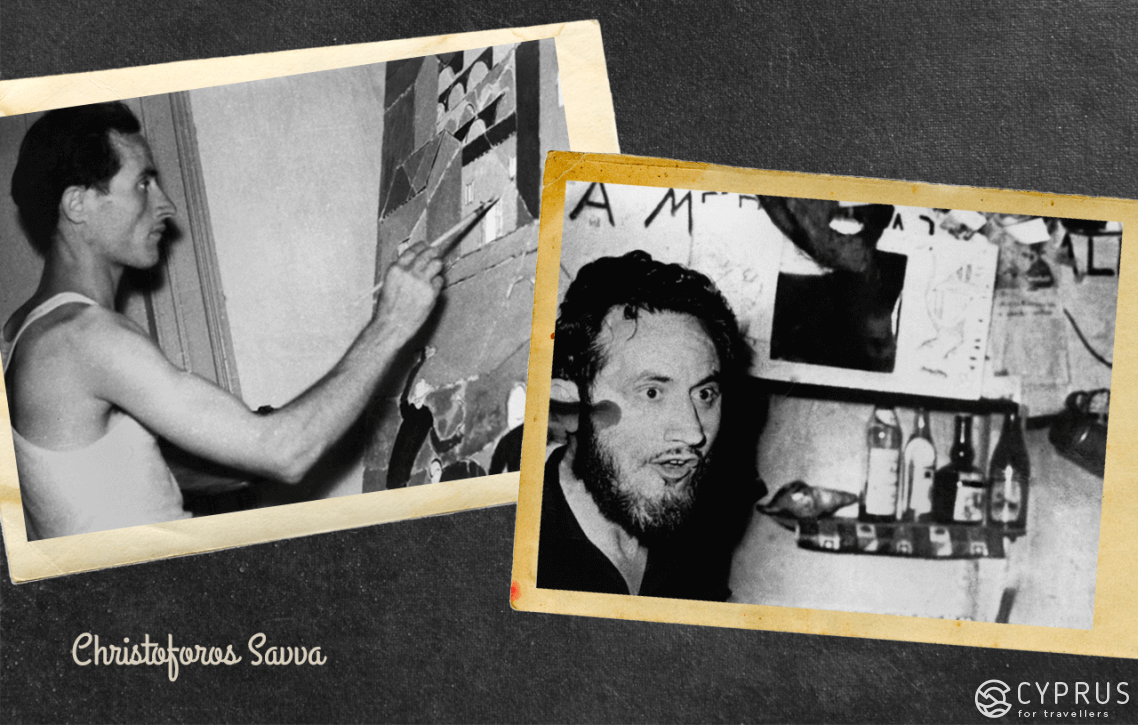
Until Next Time!

